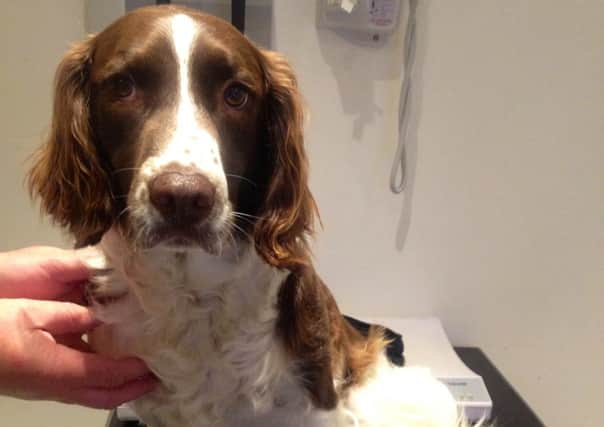At the Vets: Why you should feed your dog raw carrots ...


Sadly canine obesity is now the most common nutritional disorder seen in dogs - caused by more energy being taken in than used, leading to persistent and potentially life-threatening energy surplus.
This excess energy is stored mainly as fat, but other contributing factors include age, sex, reproductive status, inactivity, genetics, food intake, highly palatable diet, treats, environment, lifestyle, and underlying diseases stopping exercise causing weight gain.
Advertisement
Hide AdAdvertisement
Hide AdSigns of obesity are numerous, from struggling to feel your dog’s ribs, spine or waist line, to abdominal sagging or bigger, rounder face. Fat dogs are commonly reluctant to exercise, lagging behind, panting, and appearing tired and lazy.
Help prevent canine obesity by avoiding scraps or leftovers, always checking feeding guides, weighing out recommended amounts, and ensure every family member has clear instructions too. Remember when introducing a new food; always do it slowly over a few days, mixing small amounts of new with old.
It’s vital your dog maintains a healthy bodyweight, as obesity can commonly result in diabetes (the pancreas fails to secrete enough insulin to regulate blood glucose levels), heart disease (high cholesterol levels), and arthritis (which directly affects mobility, making it even harder to lose weight).
If you suspect your dog’s overweight, please make an appointment with your vet ASAP as there are several things you can do to help.
Advertisement
Hide AdAdvertisement
Hide AdBy gradually changing feeding habits, increasing levels of exercise, looking closely at type and intake of food, and develop a feeding plan, including regular vet visits for free weight checks to record progress.
High-protein, high-fibre but low-fat diets are typically recommended for weight loss, giving dogs the feeling of being full and providing more energy.
You’ll soon start to notice that when your pet loses weight, it’ll be happier and keener to exercise. Why not start right away by replacing fatty treats with raw carrot sticks? Or take up agility?
For more advice about canine obesity and how to safely help your pet lose weight, call Grove Lodge Vets on 01903 234866.
by Marc Abraham | visit www.GroveLodgeVets.co.uk